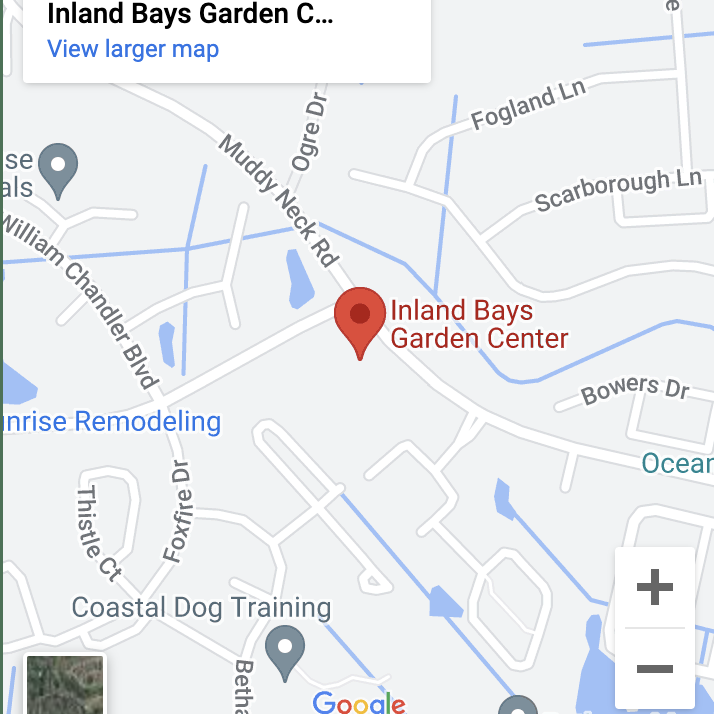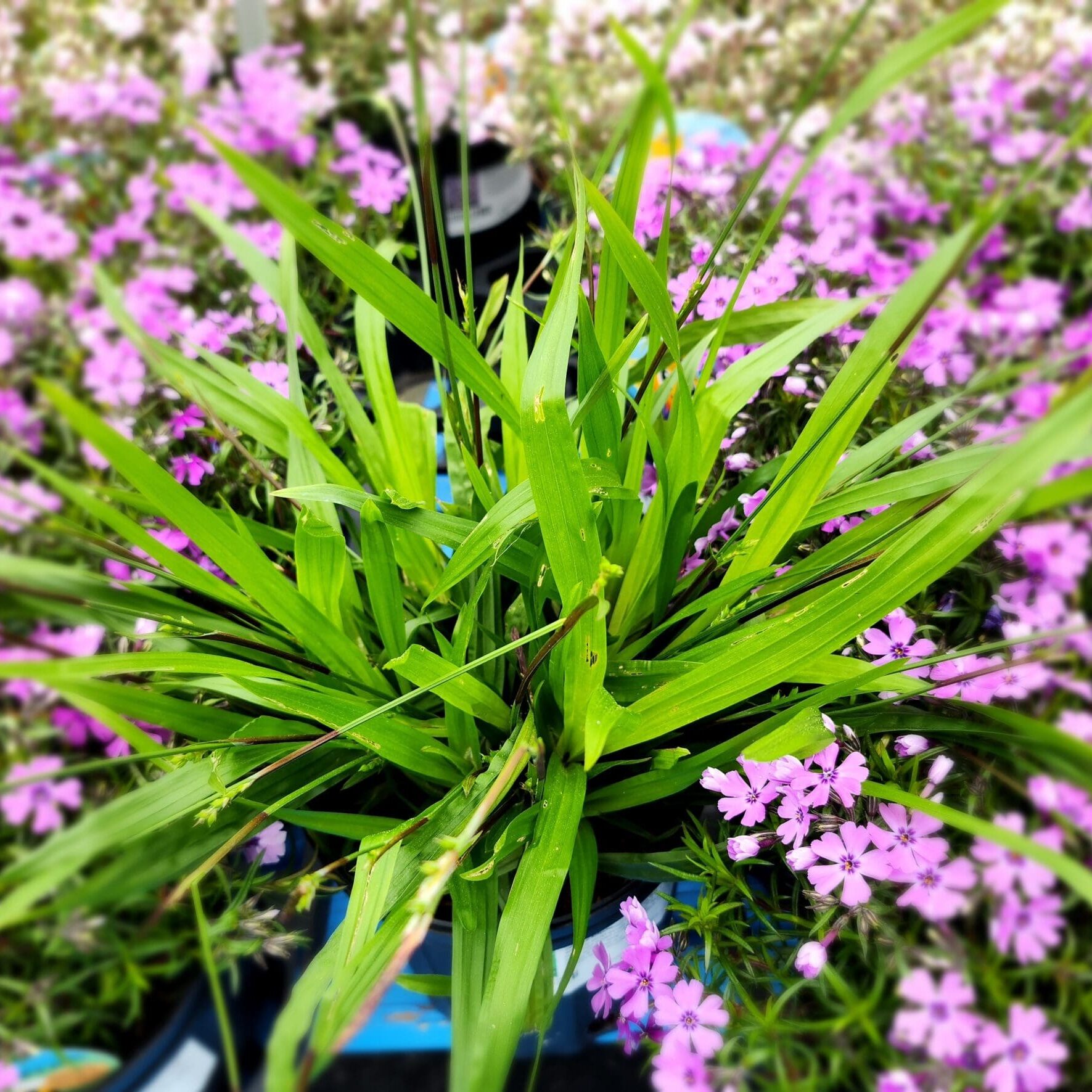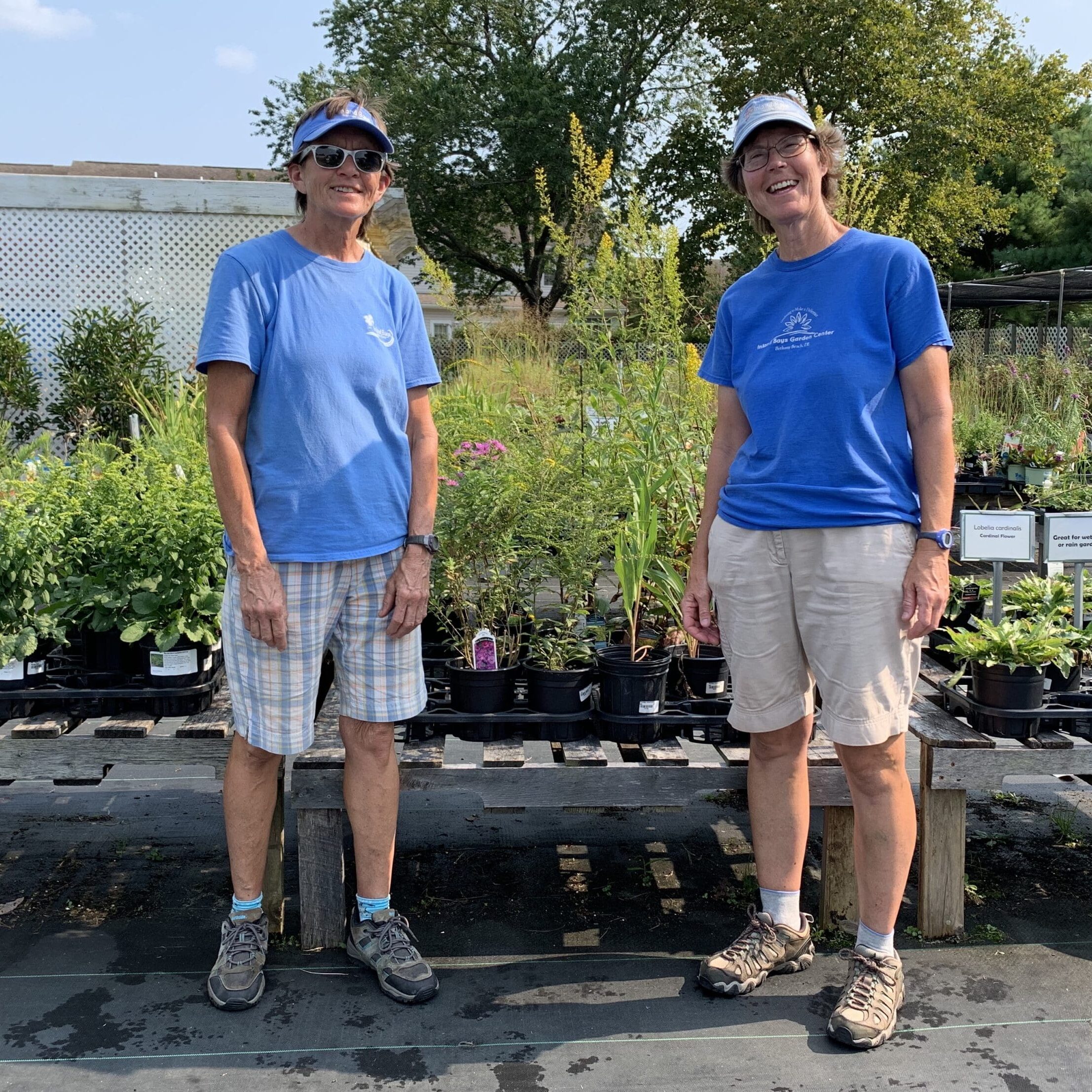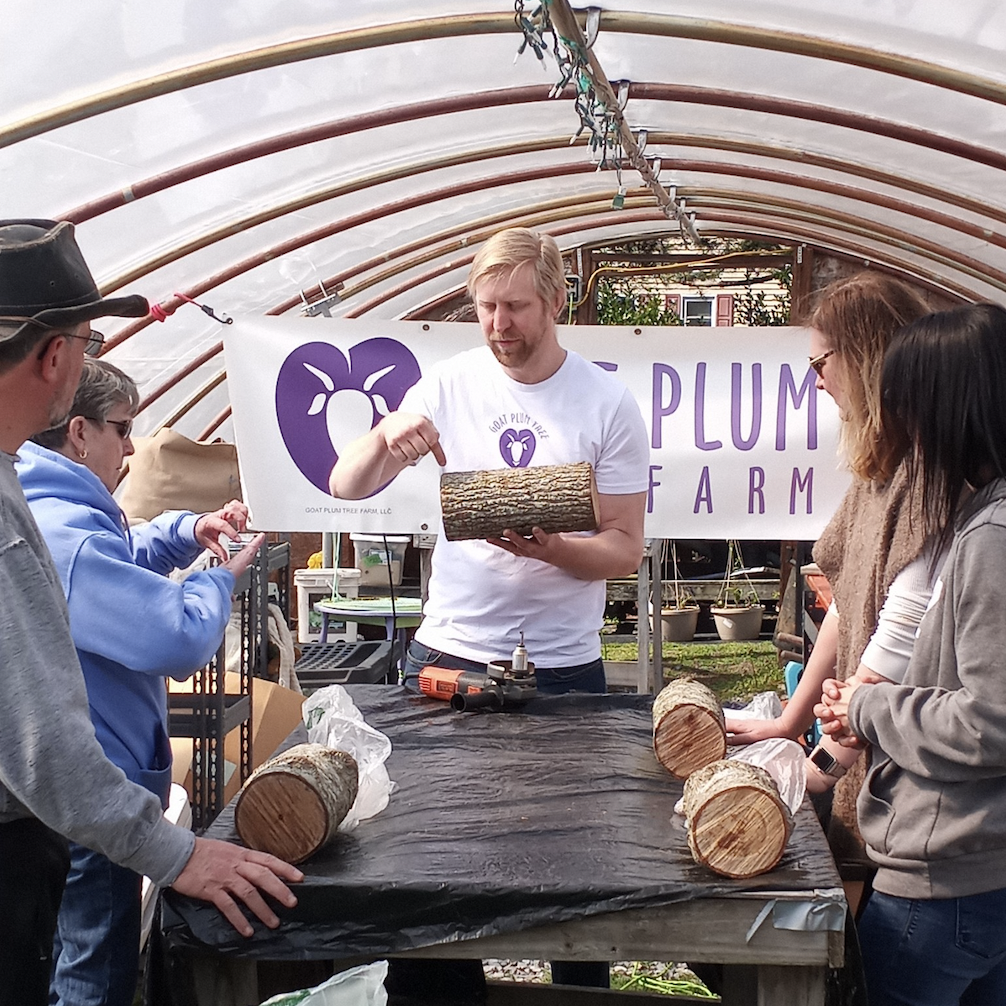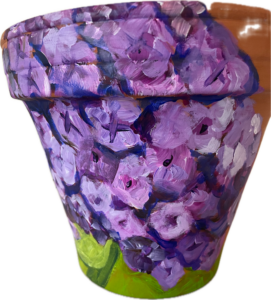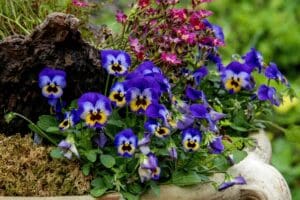Inland Bays Garden Center
Gardening to Make a Difference
Support & Restore Local Habitats | Educate the Community | Garden for Wellness


We are looking forward to this year...our tenth anniversary, so stay tuned to see how we celebrate this milestone. We want to thank all of you for making this possible. We are so proud that you are joining us in our journey to learn more about native plants and how they can make our environment, health, and gardens healthy.
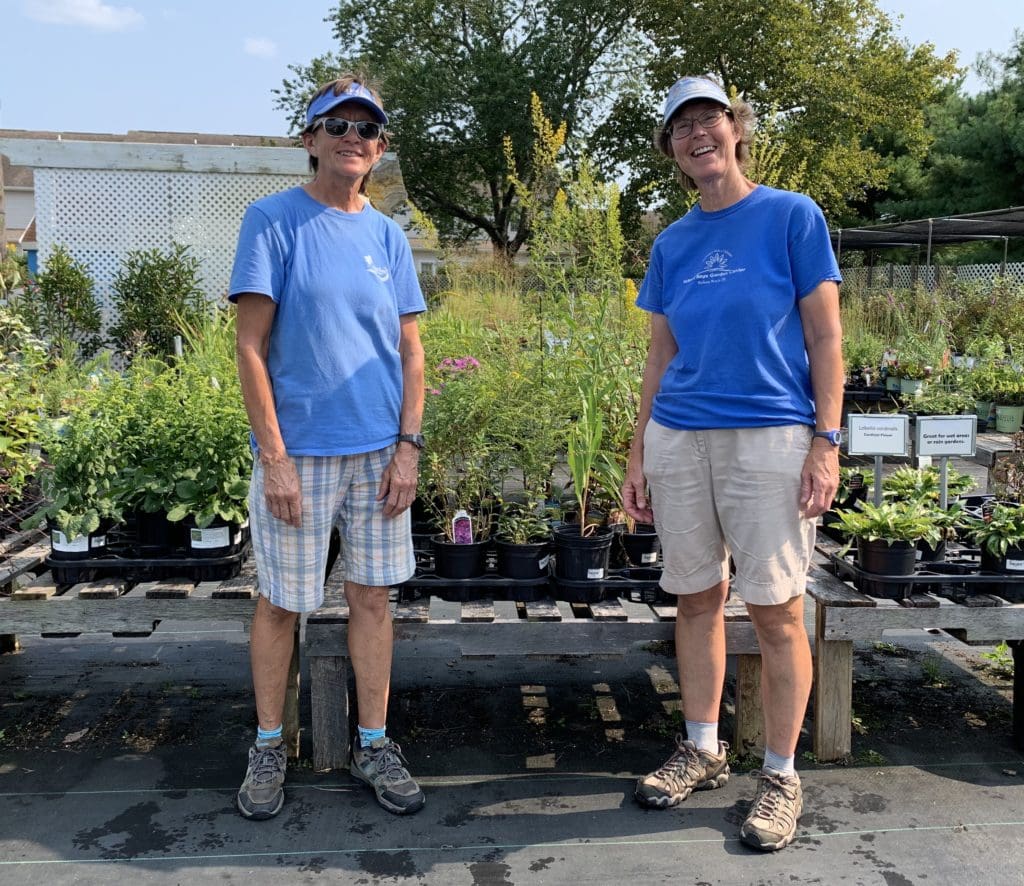
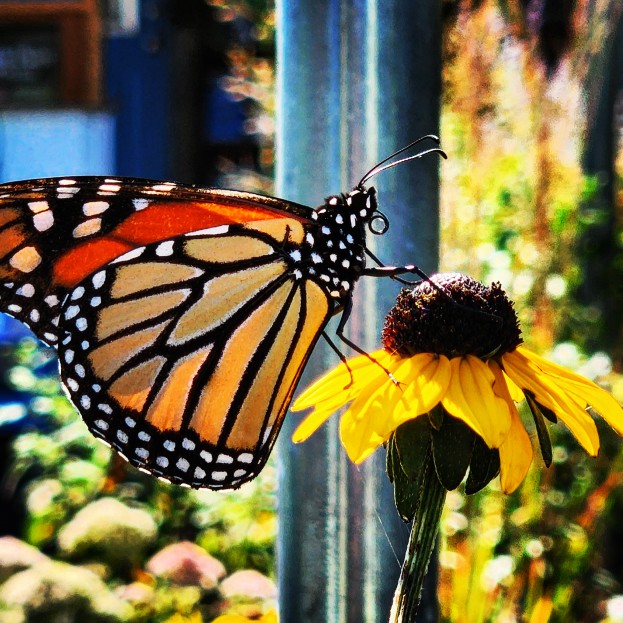
Mon - Sat: 10am - 5pm Sun 10-3
Located 2 miles from Bethany Beach
38320 Muddy Neck Rd
Frankford DE 19945
Our Plants
Inland Bays Garden Center offers a curated selection of native and noninvasive plants that are well suited to the coastal area. Our plant inventory includes trees, shrubs, perennials, grasses, succulents, tropicals, vegetables, herbs, and annuals.
About Us
In 2014, two former school teachers, Cheryl Rehrig and Denise Hoeksema founded the Inland Bays Garden Center with the mission of "Gardening to Make a Difference."
Community
We use our plant expertise to inspire environmentally friendly gardening. We work with the local community to provide education, workshops, and talks.
Upcoming Events
Painted Pots – Kathy Dennin–Meagher, owner Raye of Light Studio
Inland Bays Garden Center, 38320 Muddy Neck Rd, Frankford, DE, 19945
Styling Containers for Spring Trends 2024 – Jan Poli Saturday, May 4 10 am – 12 pm
Inland Bays Garden Center, 38320 Muddy Neck Rd, Frankford, DE, 19945
Blooming Serenity Pots for Mom – Alison Webb Schweiger Friday, May 10 10 am – 12 pm
Inland Bays Garden Center, 38320 Muddy Neck Rd, Frankford, DE, 19945

